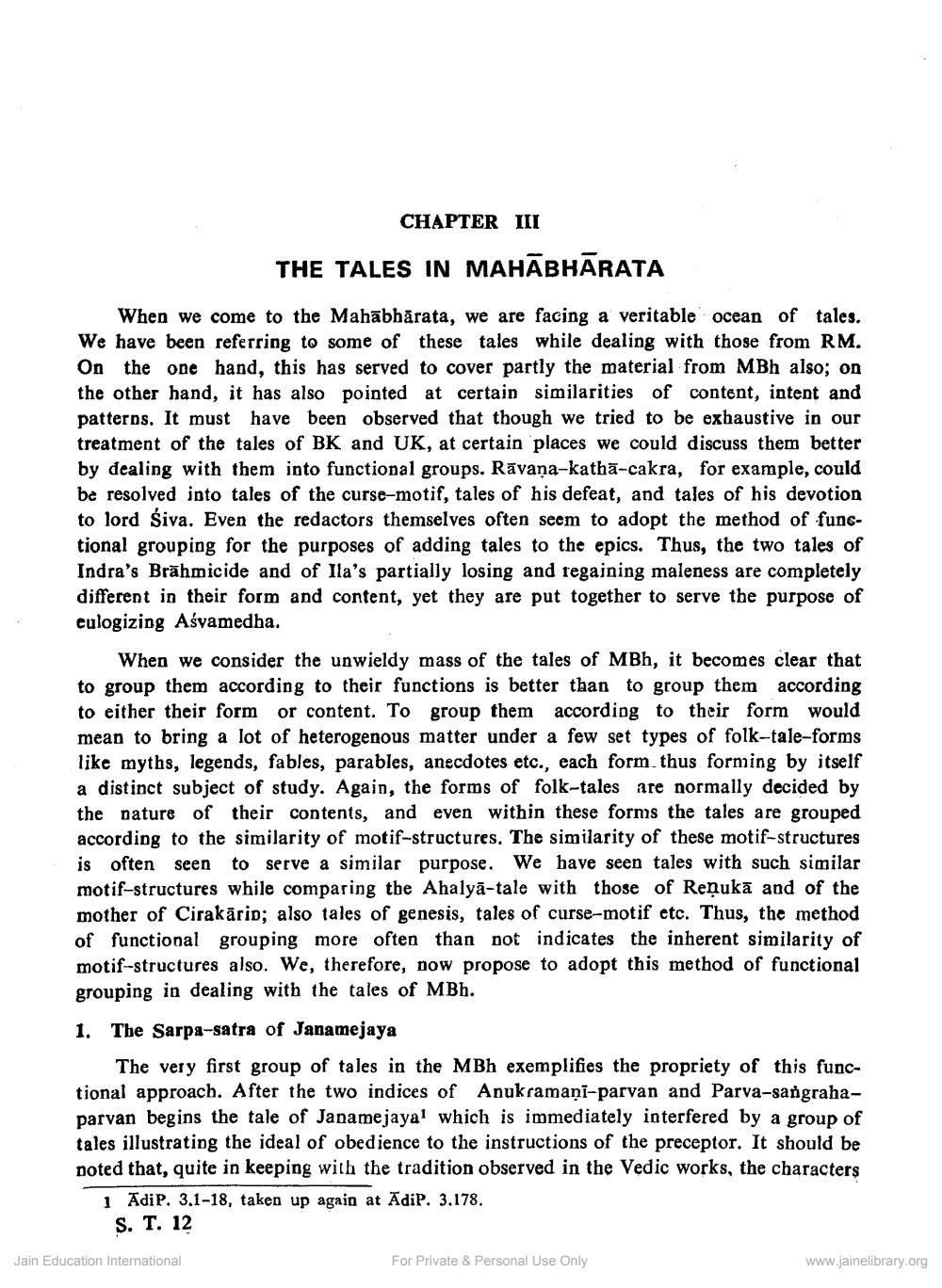________________
CHAPTER III
THE TALES IN MAHABHARATA
When we come to the Mahabharata, we are facing a veritable ocean of tales. We have been referring to some of these tales while dealing with those from RM. On the one hand, this has served to cover partly the material from MBh also; on the other hand, it has also pointed at certain similarities of content, intent and patterns. It must have been observed that though we tried to be exhaustive in our treatment of the tales of BK and UK, at certain places we could discuss them better by dealing with them into functional groups. Rāvaṇa-katha-cakra, for example, could be resolved into tales of the curse-motif, tales of his defeat, and tales of his devotion to lord Śiva. Even the redactors themselves often seem to adopt the method of funetional grouping for the purposes of adding tales to the epics. Thus, the two tales of Indra's Brahmicide and of Ila's partially losing and regaining maleness are completely different in their form and content, yet they are put together to serve the purpose of eulogizing Asvamedha.
When we consider the unwieldy mass of the tales of MBh, it becomes clear that to group them according to their functions is better than to group them according to either their form or content. To group them according to their form would mean to bring a lot of heterogenous matter under a few set types of folk-tale-forms like myths, legends, fables, parables, anecdotes etc., each form thus forming by itself a distinct subject of study. Again, the forms of folk-tales are normally decided by the nature of their contents, and even within these forms the tales are grouped according to the similarity of motif-structures. The similarity of these motif-structures is often seen to serve a similar purpose. We have seen tales with such similar motif-structures while comparing the Ahalya-tale with those of Reņuka and of the mother of Cirakārio; also tales of genesis, tales of curse-motif etc. Thus, the method of functional grouping more often than not indicates the inherent similarity of motif-structures also. We, therefore, now propose to adopt this method of functional grouping in dealing with the tales of MBh.
1. The Sarpa-satra of Janamejaya
The very first group of tales in the MBh exemplifies the propriety of this functional approach. After the two indices of Anukramani-parvan and Parva-sangrahaparvan begins the tale of Janamejaya' which is immediately interfered by a group of tales illustrating the ideal of obedience to the instructions of the preceptor. It should be noted that, quite in keeping with the tradition observed in the Vedic works, the characters 1 AdiP. 3.1-18, taken up again at ĀdiP. 3.178.
S. T. 12
Jain Education International
For Private & Personal Use Only
www.jainelibrary.org




